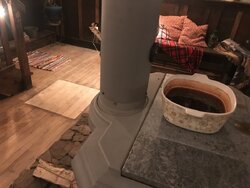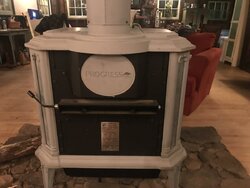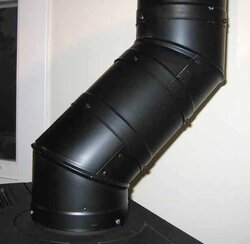Hi all, beginning my first season burning with a Progress Hybrid from Woodstock. We renovated an old cabin that’s 1600 sq ft and it’s a very open plan so it has really heated the house well down into the 40s so far in the northeast. My question is about running the stove for a prolonged period of time with the damper fully shut or near shut and creosote buildup. The owners manual says doing so can cause creosote to build up quickly and when I call Woodstock they suggest letting the fire burn down during the day and only running it in the evening, basically starting s new fire each day. The only thing is that we can shut the damper completely with a full firebox and get plenty of heat so it’s still running shut most of the time.
We have exclusively woodheat and no other means of heat except space heaters if we chose to use them. What do folks suggest from your experience burning with wood heat basically October to end of March in the shoulder seasons to reduce concern of creosote but still be able to enjoy the wood heat.
P.S. I cut all my own wood this last year, variety of elm, birch, cherry, maple and pine, all of it is below 20% on a moisture meter.
We have exclusively woodheat and no other means of heat except space heaters if we chose to use them. What do folks suggest from your experience burning with wood heat basically October to end of March in the shoulder seasons to reduce concern of creosote but still be able to enjoy the wood heat.
P.S. I cut all my own wood this last year, variety of elm, birch, cherry, maple and pine, all of it is below 20% on a moisture meter.




